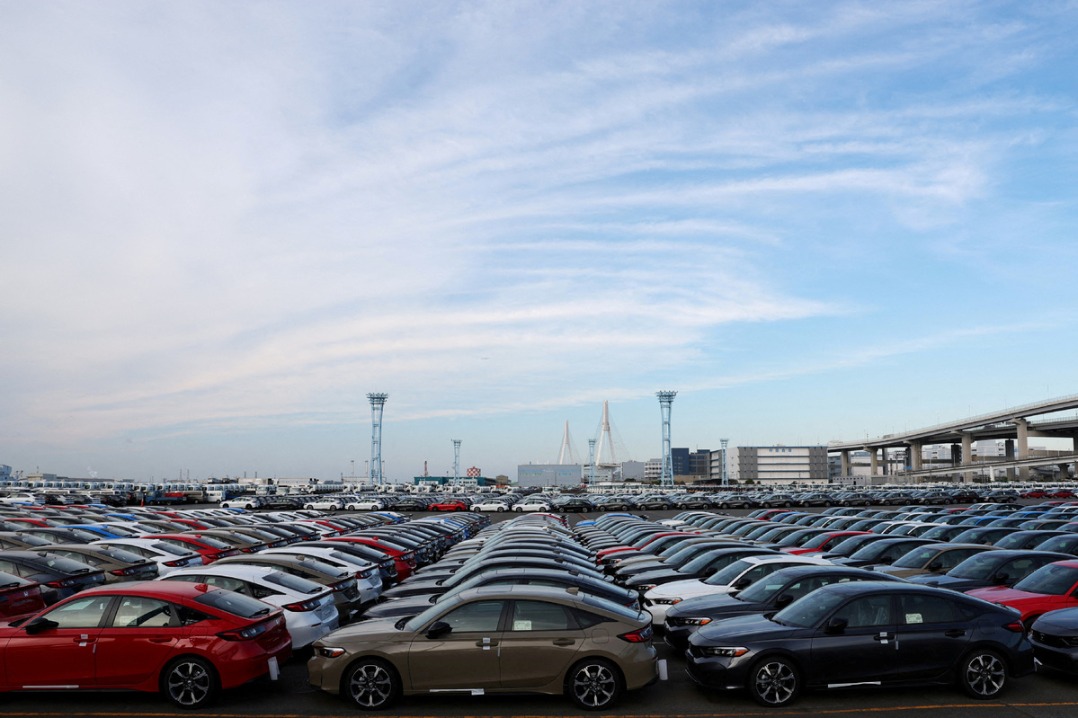Key transformations needed to galvanize China's economic resurgence


On the back of a strong 5.7 percent growth rate in 2021, US President Joe Biden boasted that for the first time in 20 years, the US economy had grown faster than China's.
The boast was misleading. China's economy grew one-and-a-half times faster, registering 8.4 percent growth in 2021. Undeterred, Biden bragged in a Twitter post in December 2022 that the US would "grow faster than China's economy" in 2022.
Despite registering one of its weakest growth rates since the inception of reform and opening-up, China's growth rate of 3 percent in 2022 was again one-and-a-half times faster than that of the US, which saw growth of 1.9 percent that year.
In August last year, on the back of one of the US' strongest labor markets in over 50 years, Biden misstated China's growth as being "close to 2 percent a year" and tauntingly referred to its economy as a "ticking time bomb". When year-end numbers were tallied up, China had grown at a pace double that of the US in 2023 — 5.2 percent compared versus 2.5 percent.
With the Congressional Budget Office projecting a US growth rate of 1.5 percent in 2024, the open question now is whether China's economy will grow three times or faster than that of the US this year.
Western detractors, who have leapt on China's post-COVID economic stumbles to pour scorn on the idea that the Chinese economy will overtake that of the US in aggregate size, should set aside space to eat their words. China's economy will not only exceed that of the US within the next decade but, should the productivity level of Chinese workers over the next quarter of a century attain that of South Korean workers today (a reasonably foreseeable prospect), the Chinese economy could outgrow the US economy in size by a factor of two.
China's demographic dividend might have approached the point of exhaustion, but there is as yet ample pent-up growth potential awaiting release in its ongoing transitions from state to market and from rural to urban areas.
Be that as it may, China cannot rest on its present and future economic laurels. It must continue to prioritize three major structural transformations.
The first is deepening the structural transformation of the domestic science and technology ecosystem. Having been burned by dependence on Western "chokepoint" technologies to advance its development, China must now prioritize the incubation of homegrown "core" technologies across a range of industrial applications. To this end, it must confront and overcome, domestically, the main structural bottlenecks to domestic innovation. Foremost, is the relative lack of research and development spending by large Chinese companies; in the West, it is the large private players that pick up much of the R & D tab in-house.
Next, the linkages between Chinese industry and academic and public research must be strengthened. The commercialization of promising academic technological breakthroughs via licensing partnerships between universities and industry must be accelerated, with the technology transfer system that links inventors, universities and enterprises playing a catalytic role. Finally, the state's weak investment in basic research must be corrected. The emphasis in this regard of the Central Science and Technology Commission, created last year, is to be welcomed.
In time, Washington's unilateral attempt to decouple and "de-Sinicize" global technology chains will come to be seen as a blessing in disguise, having done more to concentrate minds to foster domestic science and technology self-sufficiency than any "Made in China 2025" plan could have achieved.
The second major structural transformation that China must continue to prioritize is accelerating the transformation of China's growth and development model. The fixed asset-heavy overinvestment model must yield at a faster pace to a more consumption- and services-driven one that is consistent with internal economic rebalancing and aggregate demand management.
China must further liberalize the services markets, build out a unified social security net, and gradually raise the currently low retirement age. With land urbanization outstripping population urbanization due to excess supply, a structural slowdown in residential real estate construction, paired with a shift in the relative burden of taxation from labor income to property and capital, must be realized.
The third major transformation is advancing the structural transformation of government itself — that is, of China's fiscal framework and of intergovernmental relations. The fiscal framework continues to be organized around proceeds from investment-led growth, which have begun to taper as the underlying growth model hits up against its own limits. The composition of the government's taxation as a share of gross domestic product must shift from indirect to direct taxes (as is the case in advanced economies), the tax base must expand, and the state's fiscal functions must be separated from the credit allocation system.
As for intergovernmental relations, the structural revenue deficits that have pushed local governments to utilize opaque, off-budget mechanisms to raise funding must be plugged. Local governments must enjoy predictable tax-sharing revenues and the authority to raise own-source revenues, and access to credit in order to fund expenditure responsibilities must be broadened. Land-based financing for urban development must in particular give way to municipal bond-based financing.
The structural reform of government will be the hardest of the three transformations. The upside is just as substantial, though. In China's macroeconomy, local governments play a unique role on both the production and the consumption side. Fixing their structural revenue deficits will also help address the root causes of local protectionism, as well as eliminate roadblocks to updating China's bankruptcy system. Much like the 1994 tax-sharing reforms did away with the perverse incentives of the 1980s-era fiscal contracting system and ushered in three decades of robust investment-led growth, reform of the fiscal framework and intergovernmental relations today will spark a quarter century of consumption-centered growth.
China 2035 and 2049 modernization goals are well within reach. To realize them, enlightened but difficult choices must be faced head-on today.
The author is a senior fellow at the Institute for China-America Studies in Washington, DC.
































